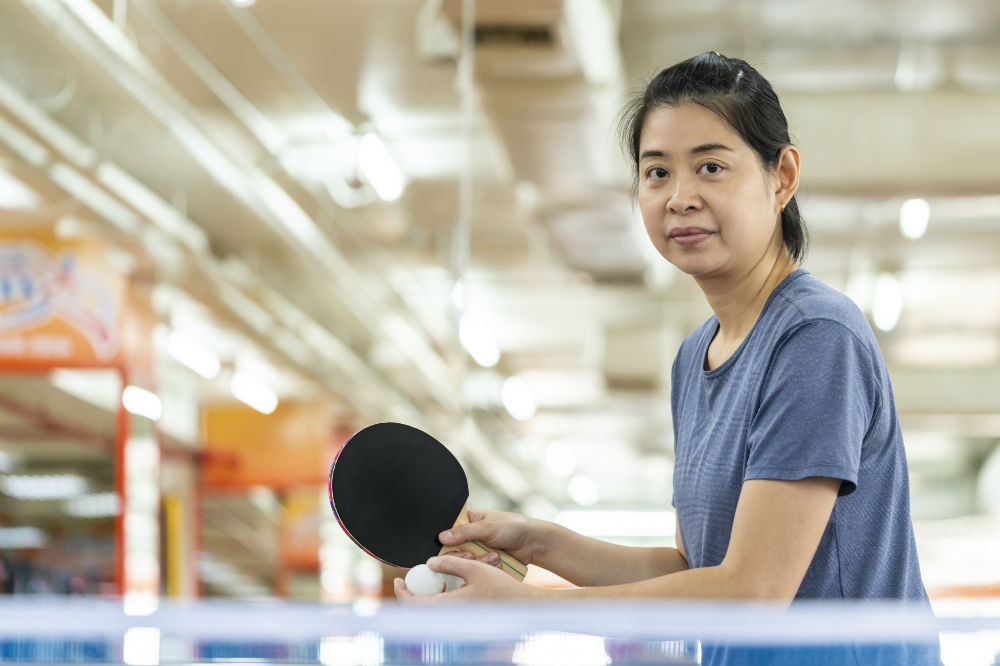- You are here:
- Home »
- Table Tennis
- » How to Spike in Table Tennis

How to Spike in Table Tennis
Table tennis is a decisively competitive sport, requiring an immense amount of focus and skill from all its players if they want to win. But ‘skill’ doesn't mean that a player should worry over how elaborate his or her techniques are.
In fact, in table tennis, even the simplest of strokes and techniques can win the game.
One such fundamental technique is what is known as the spike, commonly referred to as the forehand smash.
Such a rudimentary stroke, yet so crucial to any player’s skill set, the forehand smash can decide matches. When executed well, the smash strikes fast and hard, putting more pressure on one’s opponent.
But this technique is not all about power and force. Equally as important is the precision with which one hits the ball.
Besides actually connecting your paddle with the ball, you need to make sure you are hitting it in the right direction — downwards towards your opponent.
All this, like anything, becomes relatively simple with just a little bit of concentrated practice and repetition.
So let's take a look at how to spike in table tennis.
When to Smash
The forehand smash is commonly used to counter various opposing strokes, most notably a lob. The main aim is to force the opponent to react quickly.
It is also used to push them further away from the table. This particular stroke should only be used if the height of the ball’s bounce reaches higher than the height of the net.

How to Perform the Forehand Smash
Before anything, make sure you have already found a paddle grip with which you are comfortable. There are numerous grips to try, including the V Grip, the Seemiller Grip, the Penhold Grip, and the Shakehand Grip.
By far, the most common of these grips is the Shakehand, as it is considered both natural and easy to master (or get to grips with).
The grip is similar to holding a normal tennis racket or how you would shake someone’s hand. In the palm of your hand, grip the handle. The bat head should fit comfortably into a “V” shape created by your index finger and thumb. The other three fingers must be used to grip the paddle firmly, yet not too tightly.
Though one may not immediately think so, in table tennis, the positioning and coordination of one’s feet and body are just as important as the strength of one’s grip.
Proper footwork and positioning can allow for some truly powerful strokes, and it is no different with regards to the forehand smash.
Position Your Body
To start, face the table at an angle, with your body rotated sideways. The side your body faces outwards depends on which hand you use to play.
If you play with your right hand, your right foot should be placed behind the left foot, and vice versa. Your weight should be transferred to the back foot, allowing for enough potential energy build-up for your eventual stroke.
Raise Your Hand
Next, ensure that your playing hand is raised just enough so that it can quickly come downwards and forwards when you strike the ball. Adjust according to the trajectory of the ball.
Move Forward
Once the ball is headed your way, swing your body forward again. The front of your body should now be facing the table.
Your hips, waist, and shoulders should all have turned by now as well, and you should be ready to strike the ball. Keep your wrist fixed; only use your forearm in smashing the ball.
Spiking the Ball
The crucial element of this technique is making sure you hit the ball in a downward-facing direction.
A good rule of thumb is always to try and hit the ball at the full height of its bounce, but if you find that you cannot, try and hit it at shoulder height instead.
Some situations may call for you hitting the ball at a lower height, but such scenarios are the exception and are often quite risky.
Hitting the ball should follow on quickly from you rotating your body, as the transference of weight allows for a powerful swing.
Do not strike the ball with your full force as this can lead to you over-shooting, or even missing altogether.
Follow Through
Lastly, make sure that you follow through with the movement. Follow through applies to every move you make in table-tennis, and your body should always be moving forward with every stroke, before returning to the ready position.
Be sure not to let your racket get too far from your body. Follow through with the stroke, but don’t overextend as this makes returning to the ready position slower.
